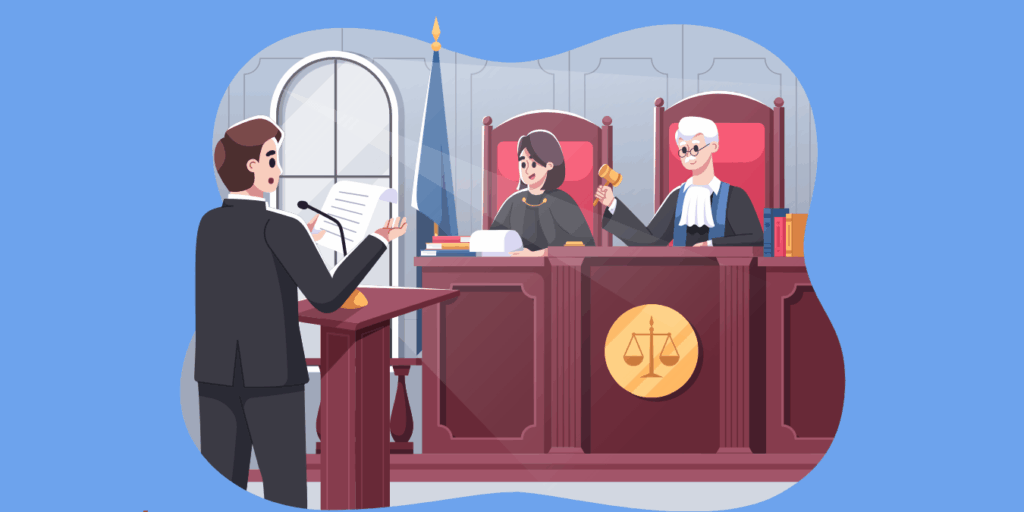
8th Pay Commission Approved: 50 Lakh Employees Rejoice!
Pay hikes, hidden perks, and secret rules—discover what the 8th Pay Commission 2025 really means for 50 lakh Indian government workers. Is your salary upgrade bigger than you think? Find out which new benefits could change your life and why experts warn everyone must check the latest details now.
A new chapter in India’s salary story just began, as the Cabinet’s powerful approval of the 8th Pay Commission promises “future-ready” pay raises and surprising perks for 50 lakh government workers. The promise of fresher pay bands and upgraded allowances is stirring anticipation across public offices, schools, and families nationwide. But what will these reforms really mean for your monthly income and daily life? With rapid updates expected—from bigger pension cheques to “hidden” allowances for education, health, and travel—the impact is likely to reach far beyond simple pay hikes. Whether you’re calculating your new take-home, planning next year’s expenses, or simply dreaming of upgraded benefits, the next few months will reveal major opportunities. Stay ahead as this article deciphers the “secret” gains, latest implementation timeline, and expert tips so you can make the most of a historic moment redefining government jobs in India
The Cabinet’s 8th Pay Commission Move: What’s Behind the Curtain?
Few decisions generate as much interest—and speculation—as a new Pay Commission. With millions relying on government salaries, the buzz is real, and so is the hope for quick, smart changes in pay structure.
- The 8th Pay Commission approval, announced in late October 2025, promises dramatic upgrades in pay, pension, and allowances for central government employees and pensioners.
- Previous Pay Commissions have historically led to bigger paychecks, higher DA (Dearness Allowance), and more holistic perks for families.
- Over 50 lakh government workers and nearly 65 lakh pensioners stand to benefit, making this a massive move for India’s economy and social stability.
Why Is the 8th Pay Commission “Trending” Right Now?
A few “hidden” trends pushed this story to the top:
- Inflation triggers: Soaring costs mean the last pay revision (7th Pay Commission, implemented in 2016) is now outdated, leading to rising worker dissatisfaction.
- Social media buzz: Hashtags like #8thPayCommission and #CabinetApproval are flooding Twitter and YouTube, amplifying anticipation.
- Electoral context: With major assembly and general elections on the horizon, pay hikes could be a strategic voter-winning tool.
- Post-pandemic pressures: Frontline sectors, especially healthcare and education, have seen workloads spike without commensurate pay increases.
8th Pay Commission: Smart Features & What’s New
Here’s what sets the 8th Pay Commission apart—these are no copy-paste tweaks.
Power Features
- Revised Pay Matrix: A smarter, more transparent formula to determine salary bands and increments across grades.
- Pension scheme upgrades: Retiring employees will see new calculations for monthly pensions—making futures more secure.
- Quick rollout: The government claims processes will be streamlined to avoid years-long waits seen in previous cycles.
- Future compatibility: The new system promises easier integration of performance-based incentives and digital payroll solutions.
- Allowance overhaul: House Rent, Travel, and Children’s Education allowances are set to undergo “shocking” upgrades, directly addressing worker grievances.
Who Gets What? Real-World Examples
- Entry-level employees: Pay bands for clerks and junior staff will rise, with minimum starting salaries likely to creep up from ₹18,000 currently to ₹26,000–₹28,000, according to initial leaked predictions.
- Mid-career officers: Group B officers and other mid-grade staff may see jumps of ₹7,000–₹12,000 per month.
- Senior officials: Secretaries and senior bureaucrats could bag increases upwards of ₹20,000 monthly, plus bigger travel and perks allowances.
The Big Economic Impact: Good, Bad, and “Hidden”
Let’s break down what this “future” decision means for the Indian economy, with both immediate and hidden effects.
The Upside
- Sharp demand boost: Higher pay means more spending on goods, housing, and travel. Expect FMCG, real estate, and retail sectors to see upticks.
- Positive emotional trigger: With rising inflation, pay hikes generate morale, loyalty, and motivation in the public sector.
- Tax windfall for states: Higher pay cycles often translate to bigger taxable income and more government revenue.
The Challenges
- Fiscal pressure: The government will need to manage budgetary shocks from extra outflows, with estimates running into several lakh crores.
- Private sector squeeze: Some experts warn that government pay hikes can disrupt salary benchmarks, raising wage pressure for private companies.
- Hidden delay risks: Quick approval doesn’t always mean quick implementation—past commissions took 2+ years for full rollouts.
Trending FAQs: Answers to Viral Questions
Why Was the 8th Pay Commission Needed “Now”?
- Persistent demands from employee unions and pensioners.
- Inflation eroding take-home power since the last revision.
- Mass agitation and strike threats if pay revision was delayed.
When Will Employees See the New Pay?
- Cabinet approval is step one; notification and committee formation take 3–6 months.
- Most changes will be backdated to the next fiscal (April 2026), but some allowances may start earlier.
Will Pensioners Also Get Hiked?
- Yes, the new pension matrix will apply to all central government pensioners.
- Family pension schemes, disability pensions, and voluntary retirement benefits will also be upgraded.
How Does It Affect India’s “Smart” New Workforce?
The composition of government workers has changed radically since the 7th Pay Commission.
- Tech and digitization roles are now mainstream—even rural government offices increasingly need IT support.
- Women make up a higher share, especially in health and education; pay parity is set to improve.
- Contractual and outsourced staff may push for inclusion, as their pay scales lag.
Future Trends: What Next?
- Experts predict the 8th Pay Commission could trigger “shocking” reforms in pay structure, incentives, and digitization.
- State governments may launch parallel pay commissions, creating a ripple effect.
- Private sector and startups may adjust salary bands to compete for talent.
Cabinet Approval Timeline: A Quick Review
- Early October: Unions and pensioners intensify push for a new pay commission.
- October 28, Cabinet gives “smart” approval amidst rising social media noise.
- Next steps: Committee formation, notifications, draft policy, final rollout (expected by end of fiscal 2025-26).
What Are the Top Hidden Perks for Employees?
- Upgraded health benefits: More comprehensive insurance coverage and medical bill reimbursements.
- Education allowance: Bigger payouts for school and college going children.
- Travel and LTC: Lump sum travel allowances, including new routes and options for digital claims.
- Professional development: Training, upskilling, and digital certification bonuses.
Quick List: Sectors Most Impacted
- Railways (largest employer)
- Defence and paramilitary
- Central health services
- Education and academic bodies
- Judicial support staff
- Administrative services (IAS, IPS, IRS)
Real-World Stories: The Emotional Side
Meet Praveen, an assistant in the Railways, whose family struggled with rising school fees and medical costs. The 8th Pay Commission means his salary jumps by ₹8,000 a month—a “game changer” for his kids’ education and family stability.
Neha, a Central Health Services officer, can now afford better private healthcare for her aging parents, thanks to upgraded allowances and reimbursement policies.
Smart Tips for Employees: How to Maximize Benefits
- Track official notifications via government portals rather than social media rumors.
- Review and update dependents and beneficiary details for allowances.
- Smart budgeting: Factor new take-home pay into home loan, education, and investment decisions.
- Stay aware of tax implications—higher pay may push employees into new brackets.
Shocking Numbers: How Much Will the 8th Pay Commission Cost?
Experts estimate a budgetary hit upwards of ₹1.5–2 lakh crores for the central government over the next three years. Pension costs alone could account for ₹50,000–₹70,000 crores in extra outflow, based on previous trends.
Trending Social Reactions
- “Finally, some hope for salaried families!”—Twitter user
- “Is the hike enough for real inflation?”—YouTube finance vlogger
- Unions celebrate, but some activists worry about rural inclusion and contract worker pay gaps.
Key Takeaways for Maximum Value
- The 8th Pay Commission promises higher pay, bigger pensions, and new allowances for 50 lakh central government employees and over 65 lakh pensioners.
- Approval comes at a time of high inflation and election buzz.
- Major hidden benefits include better health, education, and travel perquisites.
- Rollout may take several months; monitor official channels for updates.
- Fiscal impact will be large, but long-term morale and economic growth could be smart wins.
- Social, emotional, and practical benefits make this a transformative, future-ready move.
Final Thought: Are You Ready For The “Future” Pay Revolution?
The Cabinet’s smart decision might just spark a new era in India’s public sector. But as anticipation surges, the hidden details and real impact remain up for grabs. Will the pay hike truly change lives or just stir temporary excitement? Watch closely as the next steps roll out—notifications, policy tweaks, and implementation timelines will hold the secret to your actual paycheck. With millions waiting, and economic effects set to ripple, one thing is clear: the story is just beginning, and those who act smart stand to gain the most. Don’t miss ongoing updates, real-life stories, and “hidden” opportunities—for this pay commission’s saga is sure to shape India’s future in ways you might not expect.
































